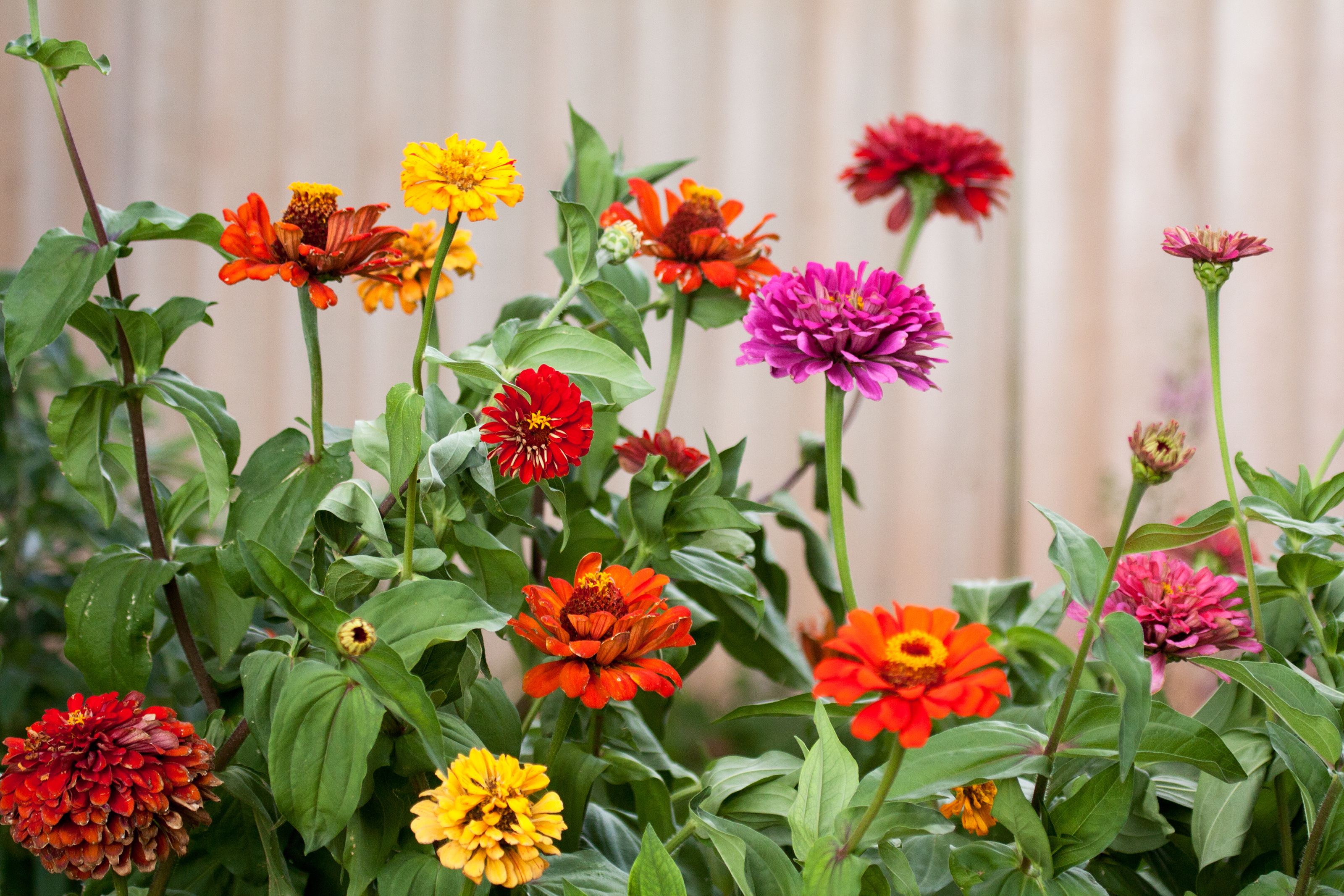
We all dream of that perfect flower patch — one that you can pick from endlessly without thinning out your beds too much. One that Martha Stewart would be proud of; think bunches of detailed dahlias, swaying cosmos, and blousy roses!
I love this time of year — for my own garden, it's the time I can start to really get to grips with my planting plans. And, one of my favorite things about gardening is that you don’t need to splash a ton of cash to create a wonderful flower bed, and that comes down to one reason: growing from seed.
Though some perennials like peonies can take a while to flower from seed, there are plenty of annual plants you can plant in May and pick this summer. But which flowers should you be growing from seed in your modern garden in May? I’ve spoken to a gardening pro to get the full rundown on which flower seeds we should be planting this month for flowers this year. So get ready to create some beautiful blooms at bootstrap prices.
1. Sunflowers
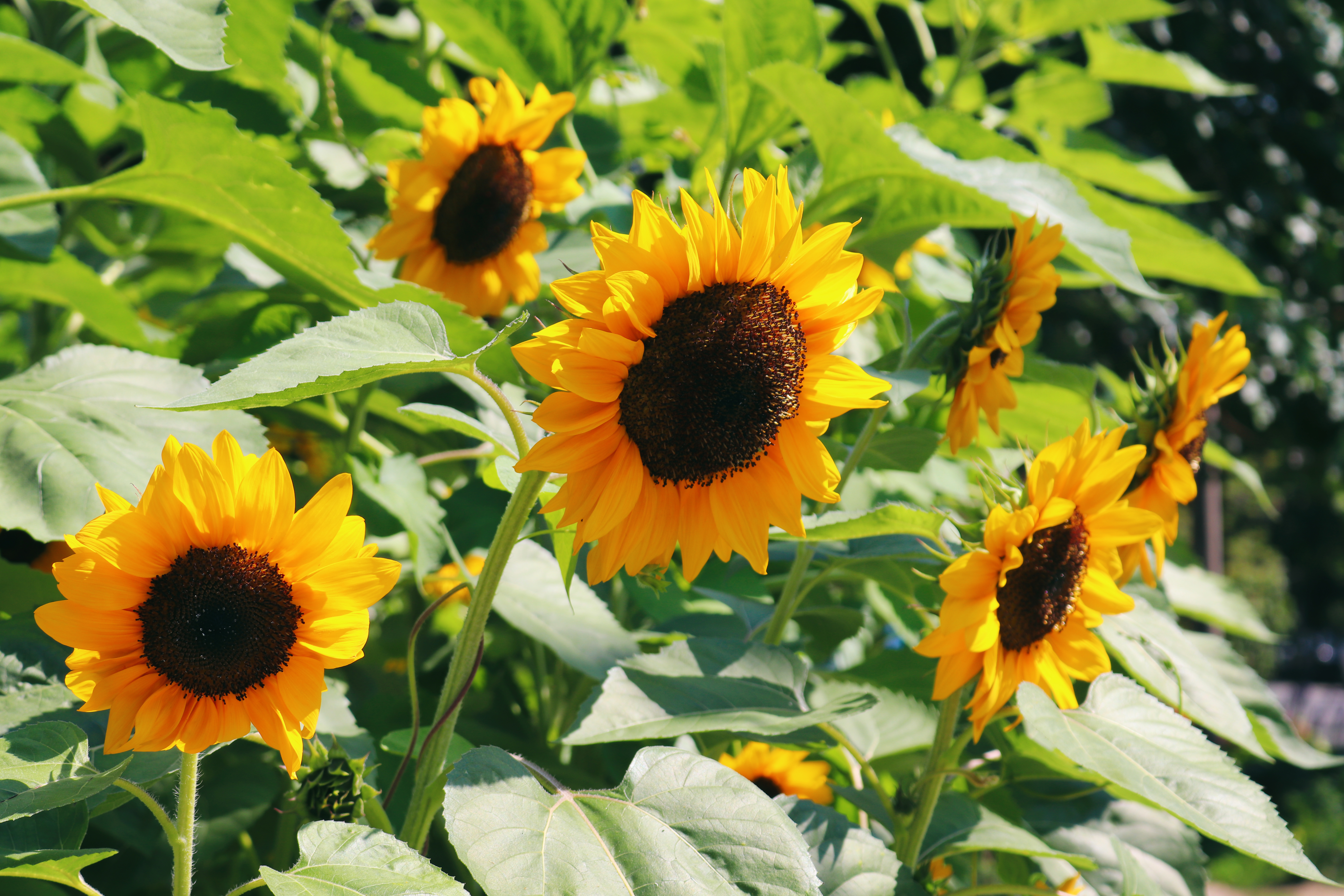
If you’re looking for a fail-safe flower to plant in May, sunflowers are top of the list. In fact, they’re so easy to grow you can even get your kids involved!
Plant expert Mike Murphy of You Had Me At Gardening says ‘Sunflowers thrive in well-drained soil and spaced planting to facilitate adequate air circulation. Regular watering is essential though, especially during dry periods.’
Don’t worry if your backyard beds are bursting at the seams either, because sunflowers thrive in containers – just make sure you use a well-draining compost mix. When it comes to your sunflower care, simply pop your sunflower seeds in compost-filled pots, water them well, and leave them in a sunny position. Once your plants mature you can choose to pot them onto a large container, or plant them in your beds and watch them reach huge heights over the summer!
2. Zinnias
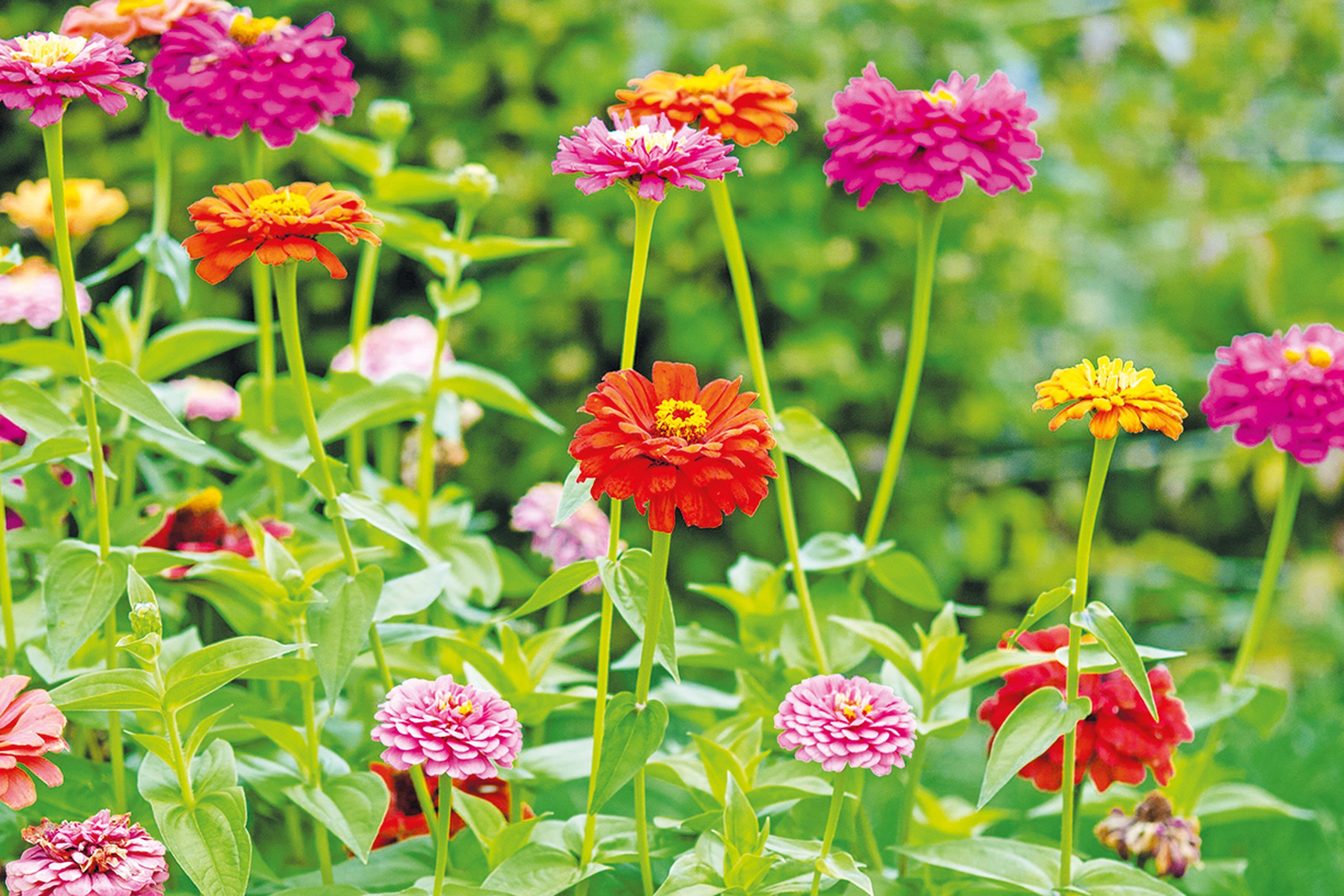
Zinnias are another great annual to sow in May, according to expert Mike. Native to Mexico, these jewel-toned daisy-like plants love hot dry weather are are very drought-tolerant, making them a great annual for USDA zones 2-11.
‘Zinnias prefer full sunlight and well-drained soil, with removal of spent flowers to encourage continuous blooming throughout the summer,' Mike says.
To start your zinnias, sow your seeds in modules with seedling compost and leave them on a sunny windowsill or outside in the full sun. Once they’ve developed at least two sets of leaves you can then pot several plants on into one large container, or plant them at the front of your beds in a good sunny position.
One of the most attractive features of zinnias is their long flowering time. The more you keep up deadheading any spent flowers the more it will reward you with even more blooms. Zinnia elegans 'Queen Red Lime' is a great pick if you love dahlia-like plants! Plus, they're some of the best flowers for bees, too.
3. Marigolds

Looking for some companion planting for your fruit and veg patch? Then pick up a packet of marigold seeds this May.
Marigolds make fantastic companion plants for tomato and cucumber plants thanks to their strong smell which wards off pests like slugs, snails, and whitefly. Plus, once they’ve finished flowering you can chop them back and improve the organic matter in your beds or compost heap.
Plant expert Mike explains ‘Marigolds flourish in sunny locations and require moderate watering. Regular removal of faded blooms promotes prolonged flowering,’ meaning staying on top of your deadheading is crucial to achieve a long bloom time.
Though there are a few different types of marigolds, French marigolds like ‘Durango’ and ‘Crackerjack’ are ideal for a plant with showy double-flowers but a minimal footprint.
3. Cosmos
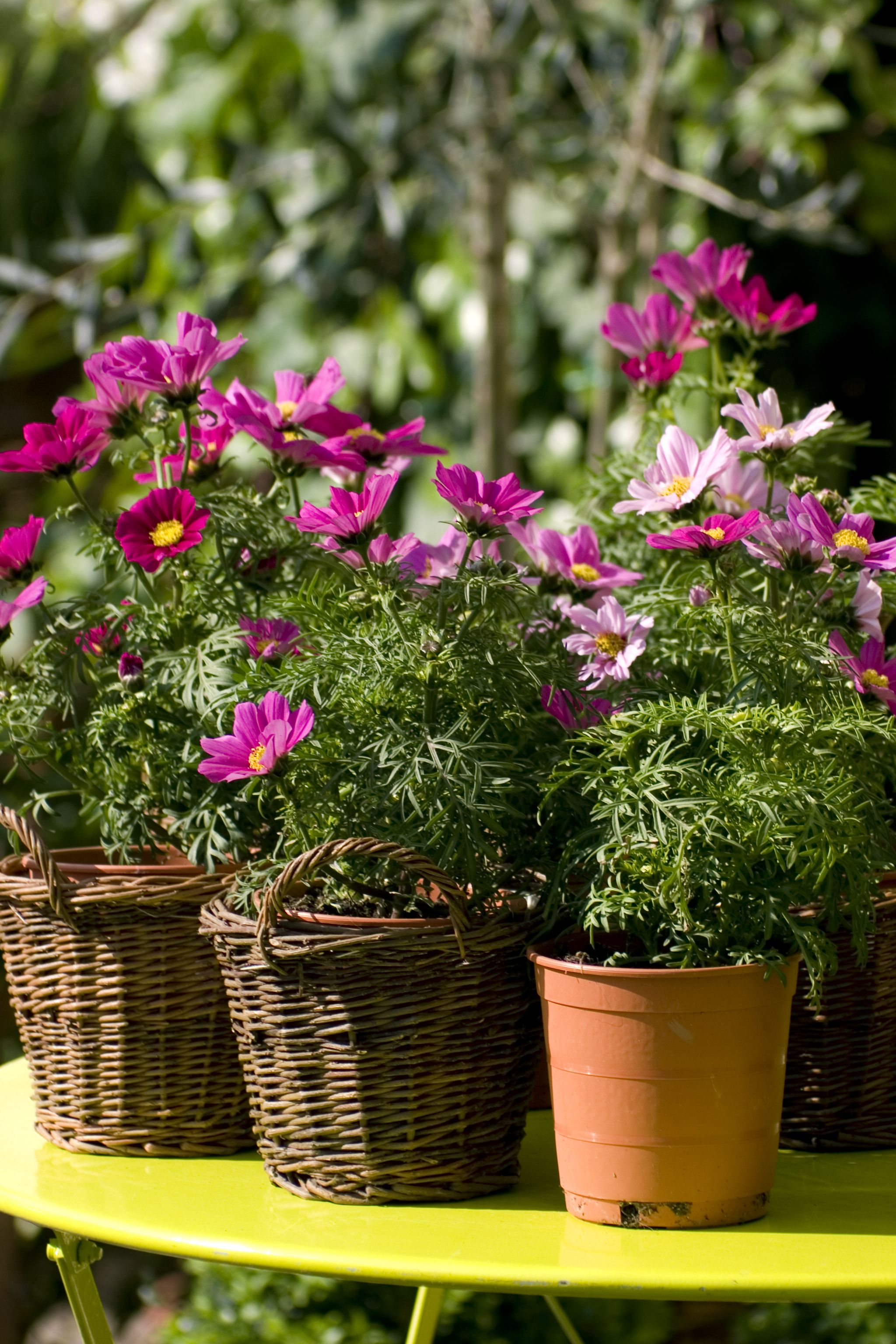
Often seen in romantic cottage-style yard designs, cosmos are a super-easy annual to grow from seed this May. Plant them in large drifts or scatter them throughout your flower beds – they’re especially great for filling in gaps around younger perennials!
Expert Mike says ‘Cosmos prefer well-drained soil and full sun exposure. Be sure to keep up with regular deadheading to encourage continuous blooming.’ If you’re looking for the best tools to deadhead cosmos and other annuals, we love the precision and quality of Japanese bypass secateurs.
To grow your cosmos from seed, use a modular tray and plant 1-2 seeds in each compost-filled module. Give them a good sprinkling of water, then wait for the seeds to grow their true leaves before planting out. Keep the compost moist while they are growing but be sure not to overwater them, especially at the earlier stages of growth. Moisture is good, but you don’t want soggy soil!
When your cosmos are starting to develop a good amount of growth, don’t be tempted to let them get leggy, pinching out the tops is a must. Simply wait until your seedlings have grown three sets of true leaves, then use your finger and thumb to remove the top of the stem down to just above the third set of leaves. Though it might sound counter-productive, it’s an important step in producing a bushy cosmo plant with lots of flowers!
5. Nasturtiums
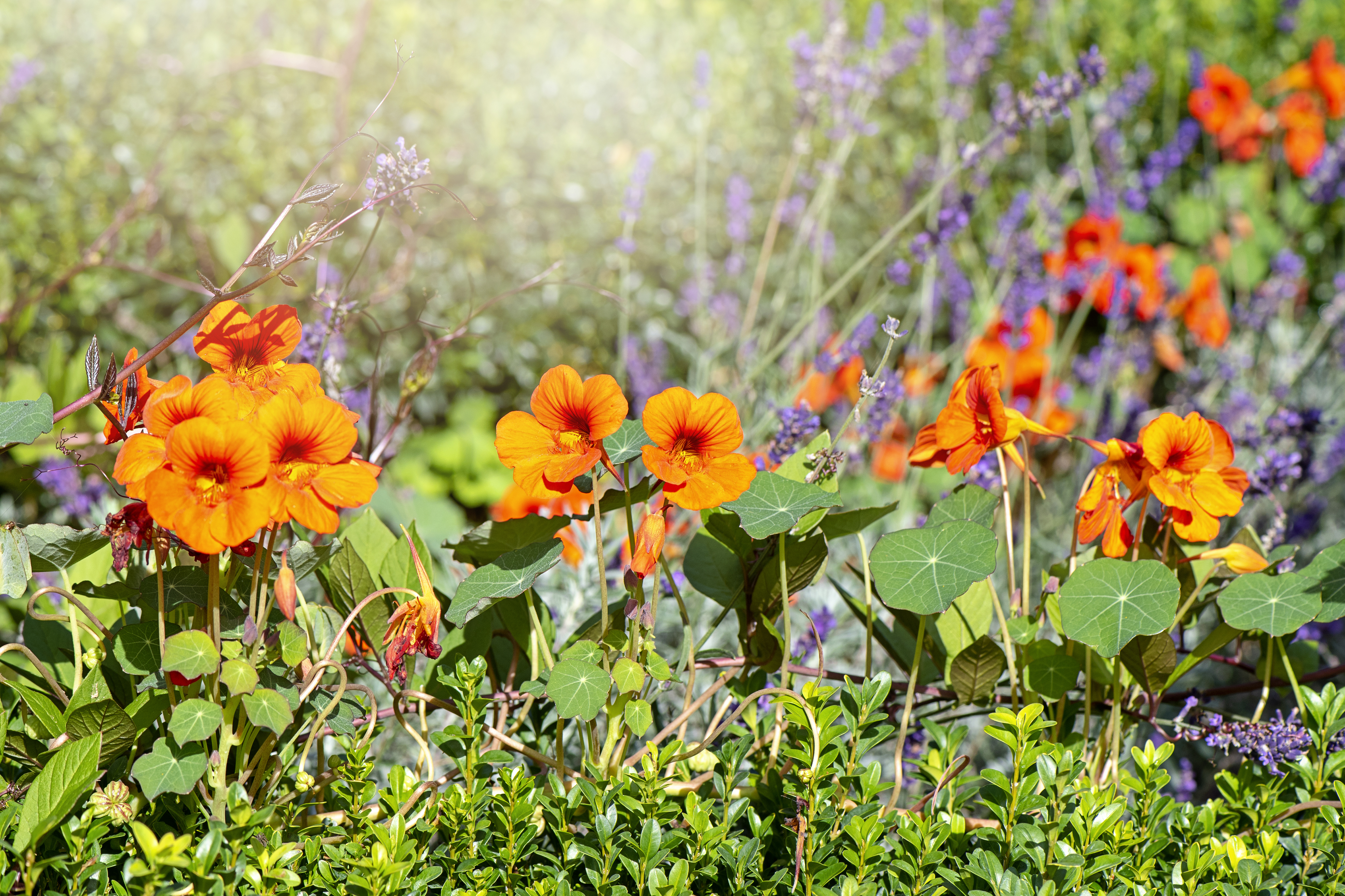
Another favorite for edible gardens is the delicious nasturtium. If you’ve watched Chef’s Table then you’ve definitely seen a nasturtium leaf or two, and growing them from seed is a breeze.
To make sure you’re planting your nasturtiums in the right place, plant expert Mike advises ‘Nasturtiums can tolerate poor soil and partial shade but prefer well-drained soil. Regular watering and deadheading encourage continuous flowering until the onset of frost. With proper care, these flowers will provide colorful blooms throughout the summer season, enhancing the yard’s beauty.’
Also known as Indian Cress, nasturtiums are speedy growers and once planted from seed you can expect a show of flowers in just 1-2 months! Plus, with this flower you can eat, the whole plant, flower, and seed are edible too, making it great for spicing up summer salads.







